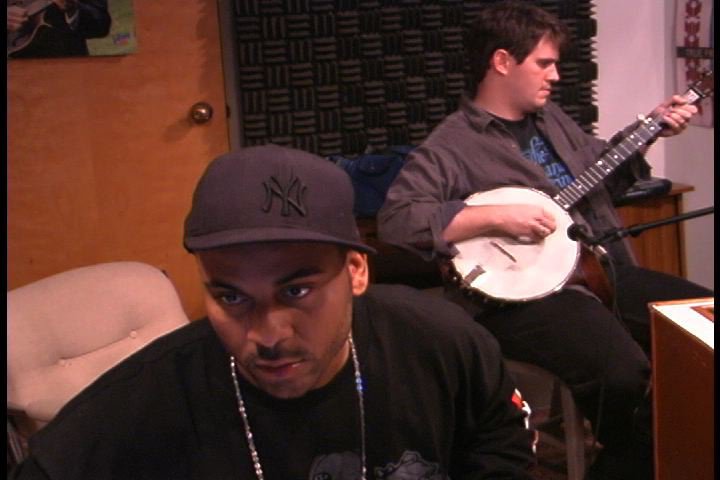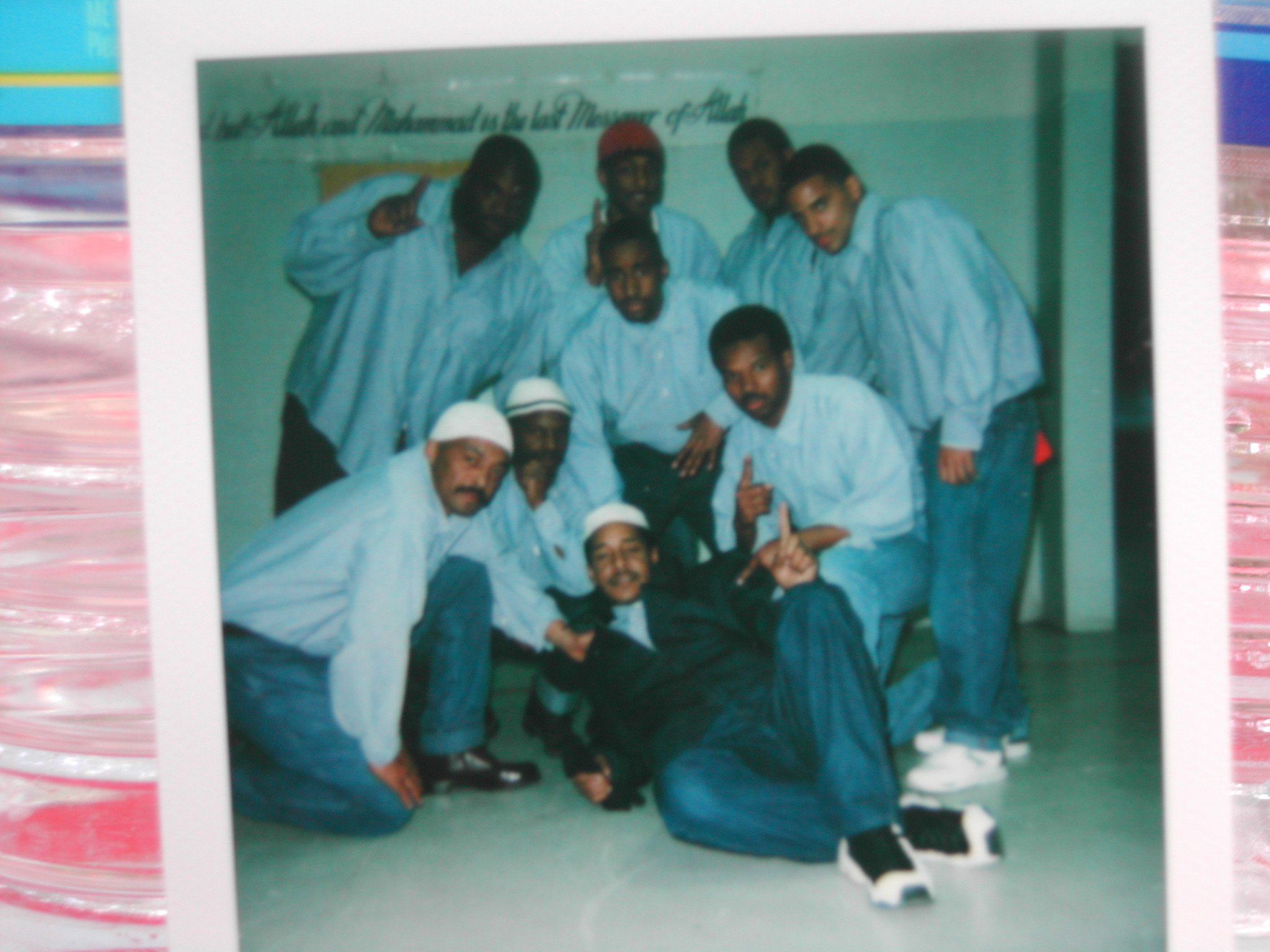Holler to the Hood
Holler to the Hood (1998-2013)
Lead Artists: Nick Szuberla, Rend Smith, and Amelia Kirby
Collaborating Artists: Jesikah Maria Ross, Mia Frederick, Dirk Powell, DanjaMouf, Carlton Turner, Maurice Turner, Frank X Walker, Gurney Norman, and Maurya Orr.
Organizers: Keith DeBlasio, Lillie Branch-Kennedy, Incarcerated people at Red Onion and Wallens Ridge State Prison
Partner Organizations: WMMT-FM, Appalshop, MUGABEE, November Coalition, Prison Legal News, Alternate Roots, American Friends Service Committee, November Coalition, RIHD, Virginia CURE, National CURE, Virginia Organizing, and Kentuckians for the Commonwealth.
Funding: Rockefeller Foundation (MAP Fund & PACT Fund), NPN, Appalshop Endowment, Kentucky Arts Council, Kentucky Humanities Council, Appalachian Community Fund, Funding Exchange / Paul Robeson Fund, Virginia Foundation for Humanities, Ford Foundation, Self Education Fund and Open Society Foundations.
In 1998, I conceived the "Holler to the Hood" project as a response to the impact of the mass incarceration system on both urban and rural communities. This multimedia endeavor harnessed the power of community-based media production, encompassing radio programming, documentary filmmaking, and cultural storytelling exchanges. The project worked with family members of the incarcerated to build grassroots power. Holler to the Hood created the dialogue between rural and urban communities through community media making.
WEEKLY RADIO PROGRAM “HOLLER THE HOOD”
Launched in 1998 the program was first called Lights Out and played jazz and later hip-hop. In 2000 program was renamed Holler to the Hood and focused on serving the growing prisoner audience in the Appalachian region. In 2001 in response to human rights abuses I organized, with a team of formerly incarcerated, incarcerated and family members Calls from Home. The first program was a three hour broadcast. This program over the course of a decade grew into a weekly and nation annual program. The founders of Calls from Home are myself, Keith DeBlasio, Lillie Branch-Kennedy, Rend Smith, Amelia Kirby and Barbara Fair, as well as a team of Red Onion State Prisoners.
CALLS FROM HOME
In response to a Human Rights Watch report I organized a special radio broadcast of prisoner families voices into the region’s prisons. The program grew to an annual national program, as well as a weekly show. Collaborating with Lillie Branch Kennedy and Keith DeBlasio the program engaged hundreds of families across Virginia in participating. The first program included incarcerated listeners writing the press release and building the listening audience.
HICK-HOP
One of the early initiatives within this project was "Hick-Hop." This project reimagined traditional mountain music and hip-hop. Its primary objective was to bridge the gap between two distinct audiences and cultures, inviting them to explore and share their unique musical traditions. Americana musician Dirk Powell and hip hop producer DanjaMowf collaborated to produce five songs. Through their music, "Hick-Hop" addressed and articulated the contemporary struggles faced by both rural and urban communities. This project not only served as an audio backdrop, but it also allowed listeners from diverse traditions to find elements of their own musical cultures reflected in the final work. The resulting music collaboration served as a score for aspects of the larger "Holler to the Hood" multimedia project, including the documentary "Up the Ridge" - which delved into the dynamics of rural-urban relations within the context of the criminal justice system.
UP THE RIDGE
Up the Ridge is a 2006 documentary film revealing injustices in the American Prison System. It especially highlights prisoners sent from urban areas to be incarcerated in rural supermax prisons, such as Red Onion State Prison and Wallens Ridge State Prison. The film delves into issues of human rights abuses, prisoner abuse, and prisoner suicide.
THOUSAND KITES
In prison slang, " shooting a kite” is sending a message. Thousand Kites was a national project that worked directly with stakeholders using communication strategies and campaigns to engage citizens and build grassroots power. It used performance, web, video, and radio to open a public space for incarcerated people, corrections officials, the formerly incarcerated, grassroots activists, and ordinary citizens to dialogue and organize around the United State’s criminal justice system. The project invited dozens of artists and thousands of participants to join Thousand Kites in sending a message about the impact of mass incarceration.
Articles, Research, and News about Holler to the Hood:
Molly Geisel, (2004). Using Music: Supermaxes, Stripmines and Hip-Hop. Journal of Popular Music Studies.
Roger Alford (2004) Lodge to Shelter Families Visiting Inmates. Washington Post.
Jonathan Tyler Hampton (2006) Holler to the Hood: A Case Study of Community Media and the United States Prison System.
Arlene Goldbard (2006) New Creative Community: The Art of Cultural Development. New Village Press.
Don Salliers, Emily Salliers (2006) A Song to Sing, a Life to Live: Reflections on Music as Spiritual Practice. Jossey-Bass.
Stephanie Ann Blessing (2007) Appalachian Ingenuity in Action: Activists Reach Beyond Traditional Economic Development in Kentucky. University of Kentucky.
Marisa Demarco (2011) From The Inside Out And Back Again Radio Project Reaches Out To Inmates And Their Families, Breaking The Silence Around America’s Prisons. Weekly Alibi.
Jan Cohen-Cruz (2012) Engaging Performance: Theatre as call and response. Routledge.
Maya Schenwar (2014) Locked Down, Locked Out: Why Prison Doesn’t Work and How We Can Do Better. Berrett-Koehler Publishers.
Justin Turner (2014), Being Young in the Age of Globalization: A Look at Recent Literature on NeoLiberalism’s Effects on Youth. Social Justice.
Alexis Clements (2016) What Role Can Artists Play in Prison Reform? Hyperallergic.
Craig Lee Engstrom and Derrick L. Williams (2020 ) Working for Justice: A Handbook for Prison Education and Activism “Prisoners Rise, Rise, Rise!” Hip Hop as a. Ciceronian Approach to Prison Protest and Community Care. University of Illinois Press.



